Pope Francis


And then Wednesday night, at the end of a marathon day in the nation’s capital, after canonizing St. Junipero Serra at the National Basilica, the pope made an unscheduled, last-minute stop to visit with the Little Sisters of the Poor, a Catholic religious order dedicated to caring for the elderly. (The sisters gained notoriety for their lawsuit against the federal government over Obamacare’s contraception mandate, but reportedly the pope made no mention of it when he stopped by the Washington convent.)
“It’s his actions that give credibility to what he says,” Sister Mary Richard, a nun from Queens Village, N.Y., who met “Papa Francesco” during the surprise visit, told me Thursday morning as we both waited at Union Station to board an Amtrak train bound for New York City.
She continued,
“He was exhausted but he came. He took the time to come. We take care of the elderly and he said, ‘Thank you. People just throw them away or get rid of them.’
“When he arrived the Mother Superior went out to greet him and she said, ‘Holy Father you must be so tired.’ And he said, ‘Priests and bishops get tired, but you don’t count the cost. But nuns, they never complain.’ “It’s his attitude, ya know?”

To mark Pope Francis' visit to the United States, Sojourners has partnered with NextGen Climate to convene key interfaith leaders and activists to welcome the Pope and his call to action on climate change. The effort, including a full-page advertisement Friday in the New York Times and several other newspapers, features a letter signed by 36 interfaith leaders and activists including Rev. Jim Wallis, President and Founder of Sojourners.

Evangelicals don’t have a pope, or even a single spokesperson. We’re not a single denomination like the Catholic Church, so we lack a comparable hierarchical structure. Particular denominations have presidents or general secretaries, but no one human being serves as the representative figure of God on earth within the evangelical faith. Rather, following the teaching of Genesis 1:26-27, evangelicals believe all humanity bears the image of God. In fact, one of the functions of the early evangelical movement was to democratize the faith — to proclaim all humanity’s equal access to God through Jesus.
So, why did my heart shake with anticipation at the thought of being in this pope’s presence? Here’s why: More than any other person, since St. Francis of Assisi (his namesake), this pope has embodied the values and priorities of Jesus. He has shown us what it might have been like to walk the earth with Jesus himself — what it might have been like to watch him embrace the leper, to watch him defend the adulterous woman calling the Pharisees not to judge, to watch Jesus challenge the values and priorities of the religious establishment of his day. He has been a vision to watch.
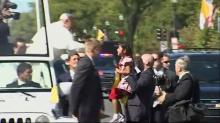
Jesus said, “Let the little children come to me, and do not stop them; for it is to such as these that the kingdom of heaven belongs.”
Pope Francis paraded through Washington D.C., on Sept. 23, and took Jesus’ words literally.
After Francis’ security detachment turned away a young girl who had gotten over the barricade fence to greet him, he quickly called her over for a blessing.
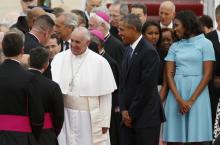
Pope Francis touched down in Washington on Sept. 22 after a historic visit to Cuba, the first Latin American pope in history on his first trip to the U.S. He comes “as a migrant,” as a top papal aide put it, on a six-day visit filled with great expectations for the popular pontiff but also numerous challenges.
Among them are the sharp, even personal criticisms directed at him from American conservatives upset with his thundering pronouncements against economic injustice and climate change, and from conservative Catholics upset that his focus on the poor and marginalized is undercutting the Catholic Church’s focus on battling abortion and gay marriage.
Francis himself addressed those concerns even before he landed, telling reporters aboard the chartered Alitalia jet that everything he has said is in keeping with church teaching and laughing at repeated accusations that he is a communist or radical left-winger:
“I am certain I have never said anything more than what is in the social doctrine of the church,” Francis said, according to Catholic News Service .
“I follow the church and in this I do not think I am wrong.

EARLIER THIS YEAR Pope Francis titillated the world’s 1.2 billion Roman Catholics when he said we should not feel compelled to breed “like rabbits.” The Twitterverse resounded with commands to “hop to it.” The Italian press dubbed Francis’ speech the “Sermon of the Rabbit.”
In it, Pope Francis said, “Some think that—excuse the language—that in order to be good Catholics, we have to be like rabbits. No. Responsible parenthood.”
Was the pope changing Catholic teaching on birth control? On the contrary, Francis went on to underscore that “responsible parenthood” requires that couples regulate the births of their children, as Vatican teaching allows, using natural family planning methods.
What we think of as “the Catholic position” on contraception—“‘Every action which ... proposes to render procreation impossible’ is intrinsically evil”—was actually codified as official teaching in 1930 under Pope Pius XI and was part of a larger conversation in Christendom. At the 1930 Lambeth Conference, for example, the Anglican bishops approved a resolution stating: “In those cases where there is such a clearly felt moral obligation to limit or avoid parenthood, and where there is a morally sound reason for avoiding complete abstinence, other methods [of contraception] may be used, provided that this is done in the light of the same Christian principles.”
In 1951, Pope Pius XII overtly accepted natural family planning as a moral form of regulating births, in limited circumstances, within Christian marriage. He also emphasized the importance of a mature and informed conscience in moral reasoning. “It is correctly argued,” he wrote, “that the true meaning of adult independence is not to be led like a little child.”
As part of the process around the Second Vatican Council, Pope Paul VI oversaw a commission to examine the use of oral contraceptives in light of church teaching. The commission’s report—titled “Responsible Parenthood”—argued for the use of artificial contraception within Christian marriage. In the end, Pope Paul VI rejected the commission’s recommendation, and his 1968 encyclical Humanae Vitae reaffirmed the church’s teaching against artificial contraception.

When President Obama meets with Pope Francis tomorrow, the world will catch a glimpse of what history looks like. The first pope from the global South in 1200 years will be welcomed in the White House by the first African-American president of the United States. This picture will be worth far, far more than a thousand words.
Pundits will analyze each public word spoken, and search for hints about the private words exchanged between these two. The politics of Pope Francis’ interaction with the President, and later with Congress, will fuel incessant speculation from Washington’s insiders. But around the world, and particularly in the global South, it’s the symbol of this meeting which will matter.
Pope Francis represents the changing face of world Christianity. Today, one billion Christians are found in Latin America and Africa. In 1980, more Christians were found in the global South than in the North for the first time in a thousand years. Every day, that movement accelerates. Francis’ words about the world’s injustices, and his actions of humble human solidarity, project the voice and longings of world Christianity’s new majority and resonant far beyond the boundaries of this faith.
President Obama symbolizes the changing demographics of America. Hope and demographics elected him in 2008, and by 2012 the changing face of the electorate in the U.S. proved determinative of America’s political future. Today, a majority of babies born in the U.S. are non-white, and some major urban areas already reflect the coming reality of a society without a racial majority.
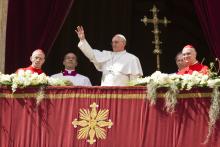
As evangelical preachers in the American South, we’re excited to welcome our brother, Pope Francis, to the U.S.
We want to be explicit in our evangelical welcome because so many who claim to be evangelical are criticizing the pope for being political and not preaching orthodox theology.

During his visit to Bolivia in July, the pope addressed an audience of farmers, trash-pickers, craftspeople, and un-unionized workers. He expressed his compassion for the poor and the marginalized and advocated passionately for them, but he did not stop there. As he did in his encyclical on climate change, the pope identified and condemned the systemic and structural causes of their suffering: the global idolization of capital and the pursuit of wealth.
The book of Esther also reflects on a political and cultural system that venerates status and wealth, sets people against one another, and thwarts human flourishing. Even if the book does not explicitly call for change, the story’s ironic reversals, which result in increasingly absurd levels of violence and destruction, reveal just how vulnerable every person in the empire is, including those with the ability to influence the king.
Set in the Persian court in Susa (the capital of the ancient Persian Empire), the book of Esther reads like farce, brimming with political intrigue, sexual innuendo, and murderous plotting. However, for all its comic revelry, the book of Esther is concerned with the serious business of survival in a system driven by vanity, gluttony, and greed.
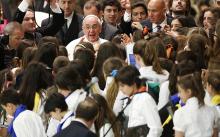
Figuring out why Pope Francis has upended so many expectations and what he might be contemplating for the future of the Catholic Church has become a parlor game almost as popular as the pontiff himself.
A single key can unlock these questions: Francis’ long-standing identity as a Jesuit priest.
It’s an all-encompassing personal and professional definition that the former Cardinal Jorge Bergoglio brought with him from Buenos Aires, and one that continues to shape almost everything he does as pope — even though he is the first pontiff to take his name from the 13th century Italian monk from Assisi who was famous for living with the poor and preaching to the animals.
“He may act like a Franciscan but he thinks like a Jesuit,” quipped the Rev. Thomas Reese, a fellow Jesuit who is a columnist for National Catholic Reporter.
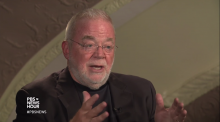
Pope Francis’ strident critique of “unbridled capitalism” has turned heads across the globe. Ahead of his upcoming visit to the United States, American politicians, religious leaders, and laypeople are eager to hear how Pope Francis thinks about economics.
Economics correspondent Paul Solman spoke with Jim Wallis and others in a segment for PBS Newshour about why the pope wants us to stop worshiping capitalism.
Jim Wallis explained how Pope Francis’ critique of capitalism matches God’s vision for the world, as well as the ministry and example of Jesus:

Next week, the conversation will change in America. All the media attention recently given to political figures will now shift to a moral leader who is changing the global public discussion about what is compassionate, just, good, and right — and Christian.
This is a fundamental spiritual shift that we deeply need in our country right now. Three major East Coast cities will have their typical traffic patterns and lodging arrangements severely disrupted. I’m not predicting an earthquake or a hurricane — instead, for only the tenth time in our nation’s history , the pope, spiritual leader of 1.2 billion Roman Catholics worldwide, will visit the United States.
The last papal visit was from Pope Benedict XVI in 2008. Pope Francis’ visit to Washington, D.C., Philadelphia, and New York City, which will take place from September 22-27, is expected to be historic in terms of the crowds it generates, with well over one million people anticipated for the Philadelphia portion alone.

Yes, popes have been visiting the U.S. since Paul VI spent a day in New York in 1965, and each of the following eight papal trips — seven by John Paul II and one by Pope Emeritus Benedict XVI — has been widely anticipated, and enormously successful.
Is it far-fetched to think this could be any different this time — that images of a beaming Roman pontiff taking in the local flavor would not lead to a surge of warm feelings toward a Catholic Church otherwise regarded as beleaguered and out-of-touch?
Yet at a moment of such excitement and goodwill, it is important to remember how unusual this trip is in the context of American history: The idea that a pope could arrive in the United States to fanfare and adulation, especially from leading American politicians, was once unthinkable.
Consider the case of Archbishop Gaetano Bedini, a representative of Pope Pius IX whose 1853 U.S. tour wrought an assassination plot and sparked violence in Cincinnati streets that led to one protester’s death and forced Bedini to flee the country under cover of night. Such extreme reactions grew from Bedini’s close association with his imperious boss, the pope, who denounced democratic government, religious liberty and all of “modern civilization.”

I can’t help but think old William Penn would be proud of Gov. Wolf earlier this year as he made his announcement to halt all executions. Penn was a pacifist and a serious skeptic of capital punishment. His Quaker heritage held that every human being carries the essence of God, and that no one should ever take the life of another, not even the state.
As Pope Francis leads worship on the Benjamin Franklin Parkway in the heart of Philadelphia, a statue of William Penn will be looking down on him from atop City Hall, and I can’t help but think our Quaker forefather will be smiling — especially as Pope Francis continues to insist that every person carries the image of God in them… and that no one is beyond redemption.
I look forward to the end of the death penalty, and I hope we get one step closer to it as the pope comes to the City of Brotherly Love.

WASHINGTON, D.C. — Faith leaders and immigrant advocates have a new poster child to help push immigration reform through Congress: Pope Francis.
Ahead of the papal visit later this month, immigrants and interfaith leaders held a press conference this week, expressing hope that Francis’ congressional visit could lead “to the beginning of an honest debate of how to fix the broken immigration system.” They also suggested members of Congress should “open their minds and hearts to the Pope’s message.”

At times, I have been a struggling Catholic, a joyful Catholic, a conflicted Catholic.
A few months ago, when I cut ties with my longtime parish, I added a new adjective: A “homeless” Catholic.
I joined a long line of parishioners leaving our beloved home, a once-engaging community devoted to social justice that walked in the steps of a man named Francis long before he was pope. Our parish had grown increasingly gloomy around the edges, its spirit deflated by new leadership that valued strict adherence to doctrine above all else.
As my friends and fellow parishioners exit in this trying hour, the words I hear from them again and again are these: This pope, the one coming to the U.S. in a little over a week, he gives us hope.
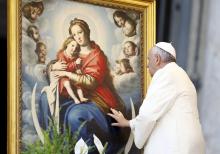
In two wide-ranging new interviews, the pontiff discusses matters both weighty and personal, such as: the perils of his popularity, his plans to welcome divorced and remarried Catholics, and his fear that the church has locked Jesus up like a prisoner.
Speaking Sept. 13 to the Argentine radio station, FM Milenium, Francis lamented those who posed as his friends to exploit him, and decried religious fundamentalism.
And speaking to Portugal’s Radio Renascença in an interview that ran on Sept. 14, Francis said that a priest comes to hear his confession every 15 to 20 days: “And I never had to call an ambulance to take him back in shock over my sins!”
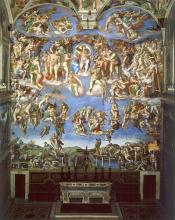
Fifty inmates from a Rome jail were given a private tour of the Vatican Museums on Sept. 13, setting the tone for Pope Francis’ visit to a U.S. prison later this month and emphasizing his concern for people on the margins.
The group from the Rebibbia prison visited the Vatican Gardens and St. Peter’s Basilica, before being given a private tour through the Vatican Museums by Museums Director Antonio Paolucci.
Once the inmates reached the Sistine Chapel, best known for its world-famous Michelangelo’s fresco, the Vatican allowed the prisoners to listen in to the pope’s midday Angelus prayer.

The pope’s teachings and his deeds have inspired people to put aside their differences and to work together for a common good. We hope that this momentum will carry over to the debates on immigration. We must work together push back against the hateful anti-immigrant messaging coming from some of our elected officials and candidates for office, and draw on the moral high ground we find in our faith and Scriptures. Including Matthew 25.
Beyond the need for broad-based legislative reform, ordinary people and communities of faith in the United States can also make a difference on an individual and family level. Just as the pope has called on European Catholic churches to “welcome the stranger” in their own parishes and homes, American churches, synagogues, mosques, and even individual homes should take up that challenge as well. It’s time for people in the United States and Europe to learn what it really means to welcome the stranger.
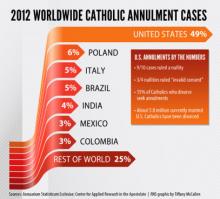
The streamlined marriage annulment procedures unveiled by the Vatican are aimed at simplifying what is often a tedious gauntlet of red tape. But it’s not clear how much effect the reforms ordered by Pope Francis will have in the U.S., where about half of all annulments are granted even though American Catholics are just 6 percent of the global church.
That’s largely because in recent decades American dioceses have taken a number of steps to make the process less cumbersome and time-consuming, some of which were reflected in the new procedures announced Sept. 8 in Rome.
The new rules, the most sweeping reform in centuries, eliminate an automatic review of any “decree of nullity” by a second panel of church judges, and they provide for what is being called a fast-track option that allows for an annulment to be granted by the local bishop within 45 days if both spouses request an annulment or don’t oppose it.
It’s an issue that potentially affects millions of people: in the U.S., 25 percent of Catholics have been divorced; 26 percent of them say they sought annulment, according to Pew Research.